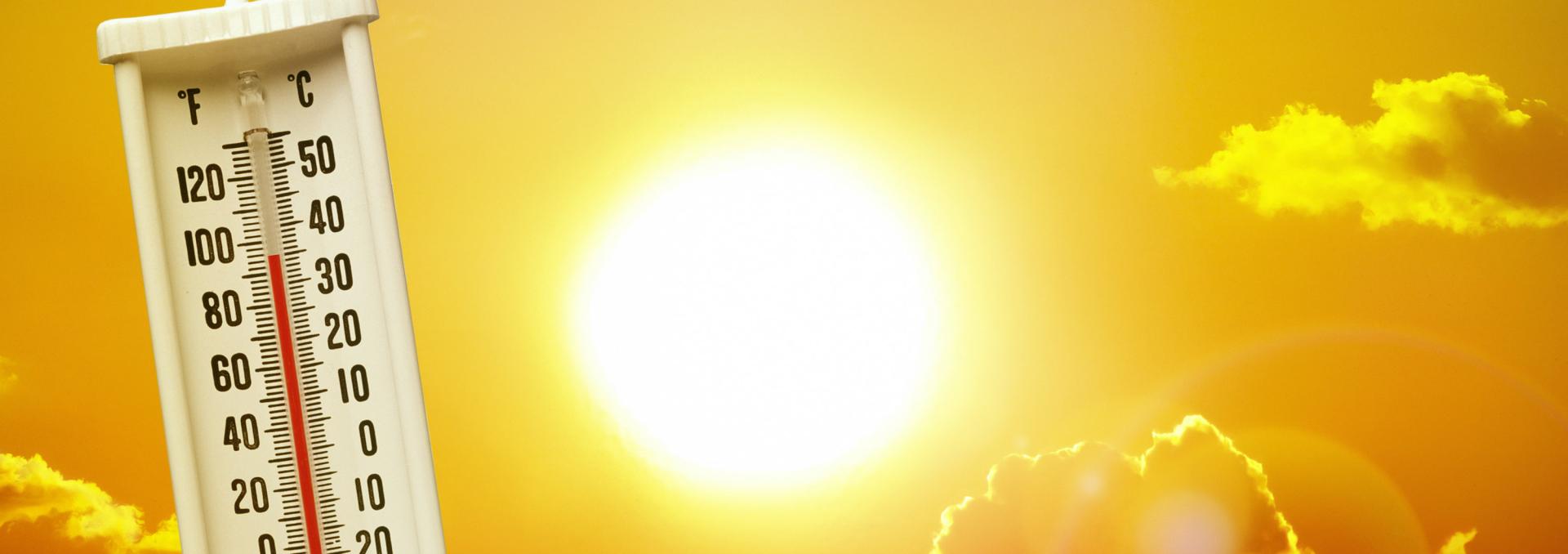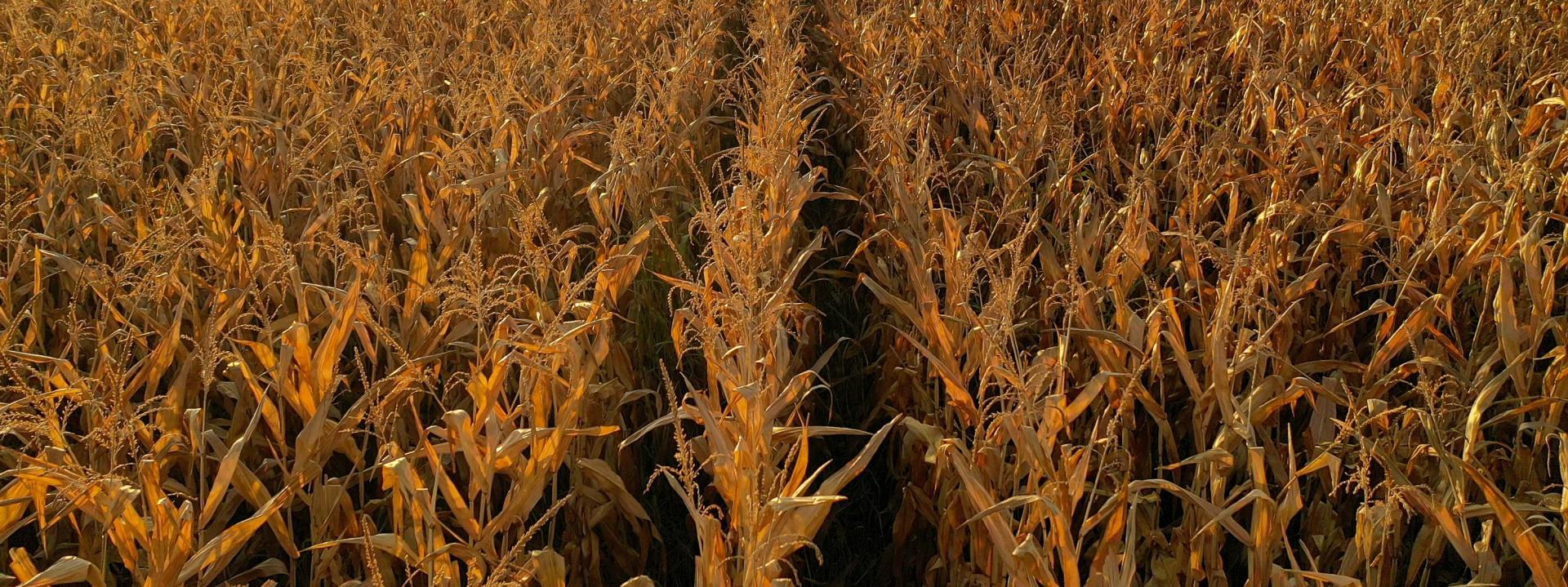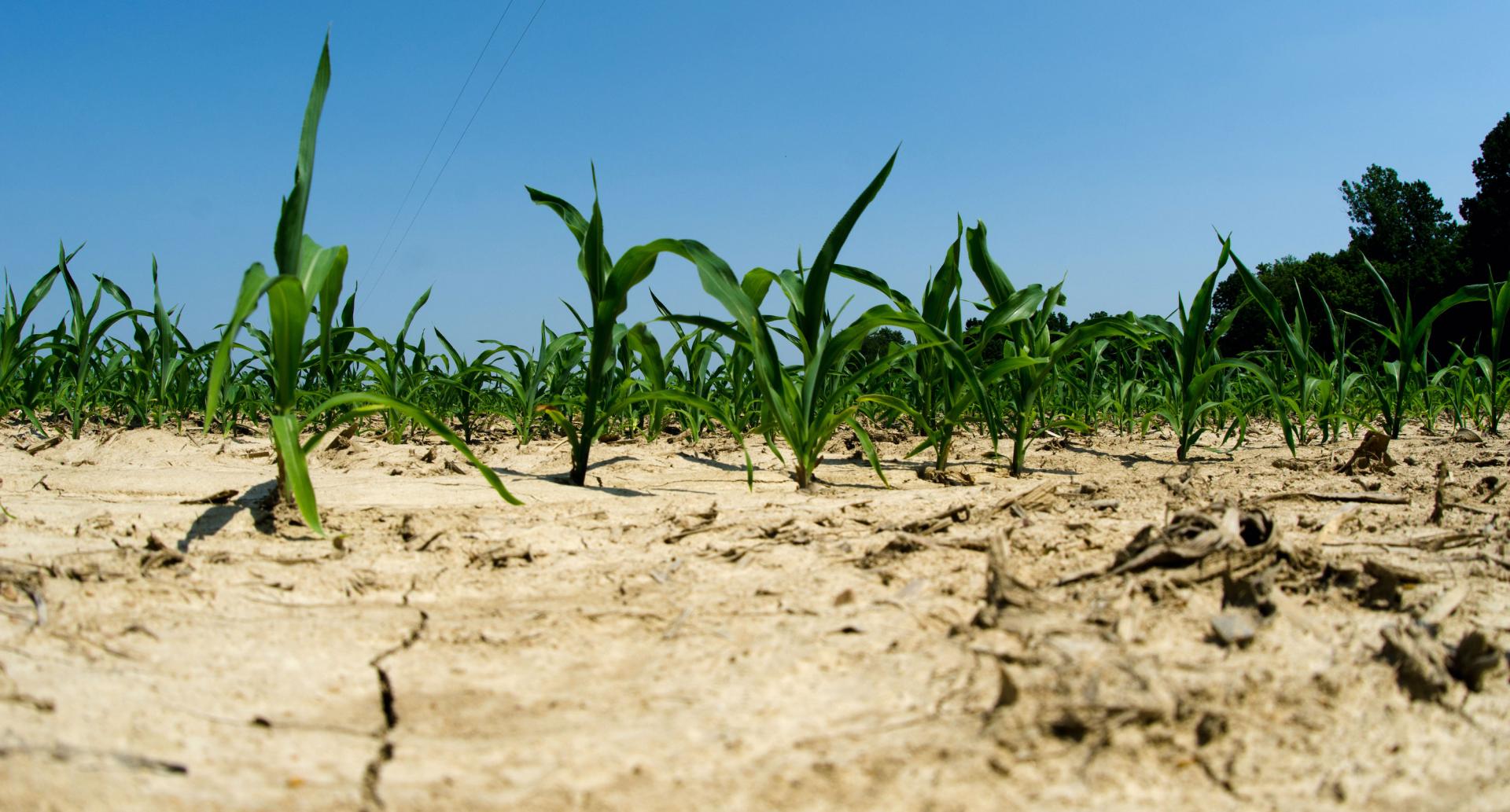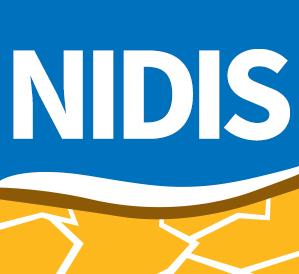For the latest forecasts and critical weather information, visit weather.gov.
Flash Drought
Flash drought intensifies rapidly due to changes in precipitation, temperature, wind, and radiation. These changes in the weather increase evapotranspiration and lower soil moisture. Flash droughts can cause extensive damage to agriculture, economies, and ecosystems if they are not predicted and discovered early.
What Is Flash Drought?
Flash drought is simply the rapid onset or intensification of drought. It is set in motion by lower-than-normal rates of precipitation, accompanied by abnormally high temperatures, winds, and radiation. Together, these changes in weather can rapidly alter the local climate.
Higher temperature increases evapotranspiration—the process by which water is transferred from the land to the atmosphere by evaporation from the soil and by transpiration from plants—and further lowers soil moisture, which decreases rapidly as drought conditions continue.
If not predicted and discovered early enough, changes in soil moisture that accompany flash drought can cause extensive damage to agriculture, economies, and ecosystem goods and services.
NIDIS Flash Drought Workshops: Definitions, Impacts, and Research Needs
More research is needed to better define flash drought, fully capture flash drought impacts, and determine research and applications priorities. Since 2020, NIDIS has hosted two international Flash Drought Workshops, in 2020 and 2023, to examine flash drought definitions and to coordinate and co-develop a research pathway to address the management and response challenges associated with flash drought. Read the 2nd National Flash Drought Workshop Report: Building on Progress and Looking Forward.
Or, view additional resources developed from these workshops:

Causes of Flash Drought
Unlike slow-evolving drought, which is caused by a decline in precipitation, flash drought occurs when low precipitation is accompanied by abnormally high temperatures (e.g., heat waves), high winds, and/or changes in radiation. These sometime-rapid changes can quickly raise evapotranspiration rates and remove available water from the landscape.
Geographic differences and climate patterns also impact the development of flash drought. In contrast with conventional drought—which may occur throughout the year at any location—flash drought typically occurs during warm seasons in the central United States. Widespread flash drought in the U.S. is often tied to La Niña events.
One study found that between 1979–2016, flash droughts in the western U.S. occurred more frequently in May and June, with the Northwest climate region seeing an additional peak at the end of the growing season. In contrast, flash drought frequency across the central and parts of the eastern U.S. peaked in July and August. The frequency of flash drought in the Southeast region generally peaked in May. For all climate regions, flash drought intensity tended to increase toward the beginning of the growing season and then decrease.
Key Takeaways

Predicting Flash Drought
The prediction of flash drought is critical to successfully mitigating and preventing damages whenever possible. Scientists have identified evapotranspiration and soil moisture as early warning indicators for the development of flash drought. Changes in evapotranspiration correspond with flash drought in the contiguous United States, indicating that it may be a primary mechanism involved in the sudden onset and intensification of drought conditions.
In one study, researchers found that all flash droughts studied were preceded by sudden increases in evapotranspiration rates caused by changes in heat, wind, and radiation. Soil moisture was plentiful prior to the onset of drought, but decreased as evapotranspiration rates rose. They concluded that changes in evapotranspiration rates are a strong indicator of flash drought (Chen et al. 2020).
Despite the importance of prediction, scientists have found that flash droughts occur even when conditions just two months prior to the event appeared to be unfavorable for drought development, demonstrating that flash drought can occur even when there are no preceding signs that can be detected with known metrics (Christian et al. 2019). Better prediction of flash droughts is an active area of research. NOAA's Climate Prediction Center is currently working on an experimental rapid onset (flash) drought product as a component of their Week-2 U.S. Hazards Outlook.
Key Takeaways

Flash Drought Impacts
Flash drought occurs more often than many people realize and can cause major impacts. Significant negative impacts to the agricultural sector have been better documented than impacts to other sectors and the environment. Flash drought has occurred in the southeastern United States as recently as the fall of 2019. In a widespread flash drought across the central U.S. during the summer of 2012, damages in the central Great Plains were estimated to be in excess of $30 billion.
Although most flash droughts do not persist to become prolonged drought, in one study, 5 to 10 percent of flash droughts transitioned to the highest drought category given by the U.S. Drought Monitor: Exceptional Drought, or D4 (Christian et al. 2019).
Key Takeaways
Resources
Helpful Links
2nd National Flash Drought Workshop Report: Building on Progress and Looking Forward
NOAA/NIDIS
2nd National Flash Drought Workshop
NOAA/NIDIS
2022 Webinar: Rapid Onset Drought Risk Inclusion in the U.S. Week-2 Hazards Outlook
NOAA/NIDIS, National Weather Service
2021 Flash Drought Webinar Series
NOAA/NIDIS, National Weather Service
2020 Flash Drought Virtual Workshop: Presentation and Materials
NOAA/NIDIS
Making Sense of Flash Drought: Definitions, Indicators, and Where We Go from Here
NOAA/NIDIS
Research: Developing a Flash Drought Climatology and Case Studies to Inform Decision-Making
Northeast Regional Climate Center, NOAA/NIDIS
Quick Drought Response Index (QuickDRI)
The National Drought Mitigation Center
Condition Monitoring Observer Reports (CMOR)
National Drought Mitigation Center
Drought Impact Reporter
National Drought Mitigation Center
Evaporative Demand Drought Index (EDDI)
NOAA Physical Sciences Laboratory
The Evaporative Stress Index (Video)
NASA Goddard Space Flight Center
References
Content on this page excerpted and adapted from:
Regional Characteristics of Flash Droughts Across the United States
Environmental Research Communications, 1(12), 2019
Predicting Flash Drought
NOAA/NIDIS | U.S. Drought Portal
Real-Time Prediction of Areas Susceptible to Flash Drought Development
Atmosphere, 11(10), 2020
Flash Drought Characteristics Based on U.S. Drought Monitor
Atmosphere, 10(9), 2019
Flash Drought Engulfs the U.S. Southeast in September 2019
NOAA | Climate.gov
What Does Flash Drought Look Like in Your Region?
NOAA/NIDIS | U.S. Drought Portal
Flash Droughts over the United States (PDF)
NOAA National Weather Service, Science and Technology Infusion Climate Bulletin

Related Content
Data & Maps | Temperature & Precipitation
Access current, historical, and forecasted precipitation and temperature datasets and maps.
Data & Maps | Soil Moisture
Access tools to monitor observed data in crop, topsoil, and soil moisture, surface water, changes and anomalies, water storage, soil moisture outlooks, and more.
Research & Learn | Ecological Drought
Flash drought can quickly deplete soil moisture and dramatically increase evaporative stress on the environment. Learn more about ecological drought.

